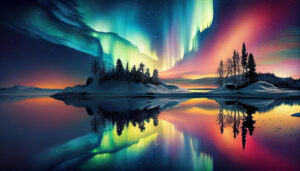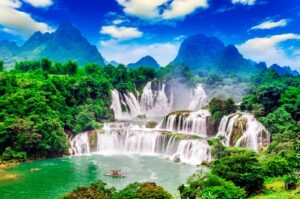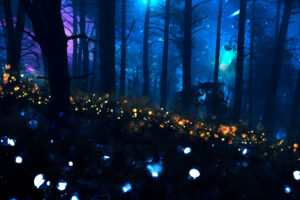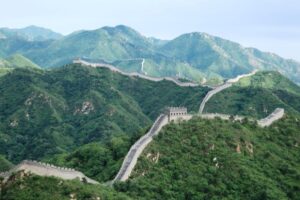Waterfalls are some of the most breathtaking natural wonders in the world. The sheer power and beauty of a waterfall can leave anyone in awe. From iconic landmarks to hidden gems, there are countless waterfalls around the globe that are worth visiting. In this article, we will explore the top 10 highest waterfalls in the world, & in India.
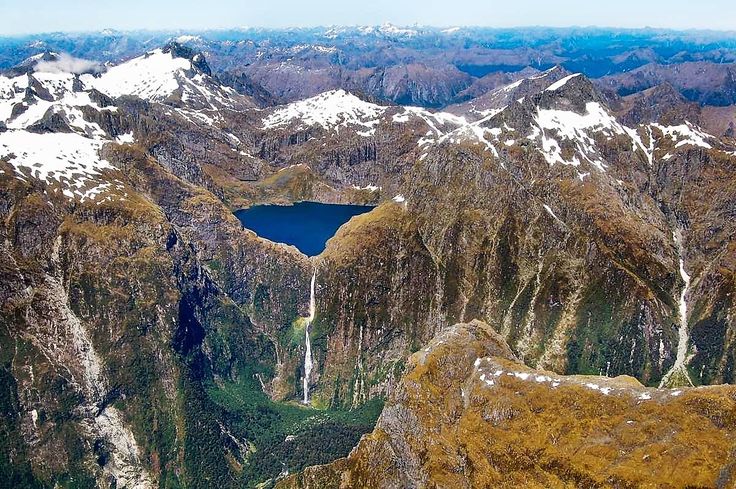
Table of Contents
Angel Falls, Venezuela
Standing at a staggering height of 3,212 feet, Angel Falls is the highest waterfall in the world. Located in the Canaima National Park in Venezuela, this iconic waterfall is an absolute must-see for any nature enthusiast.
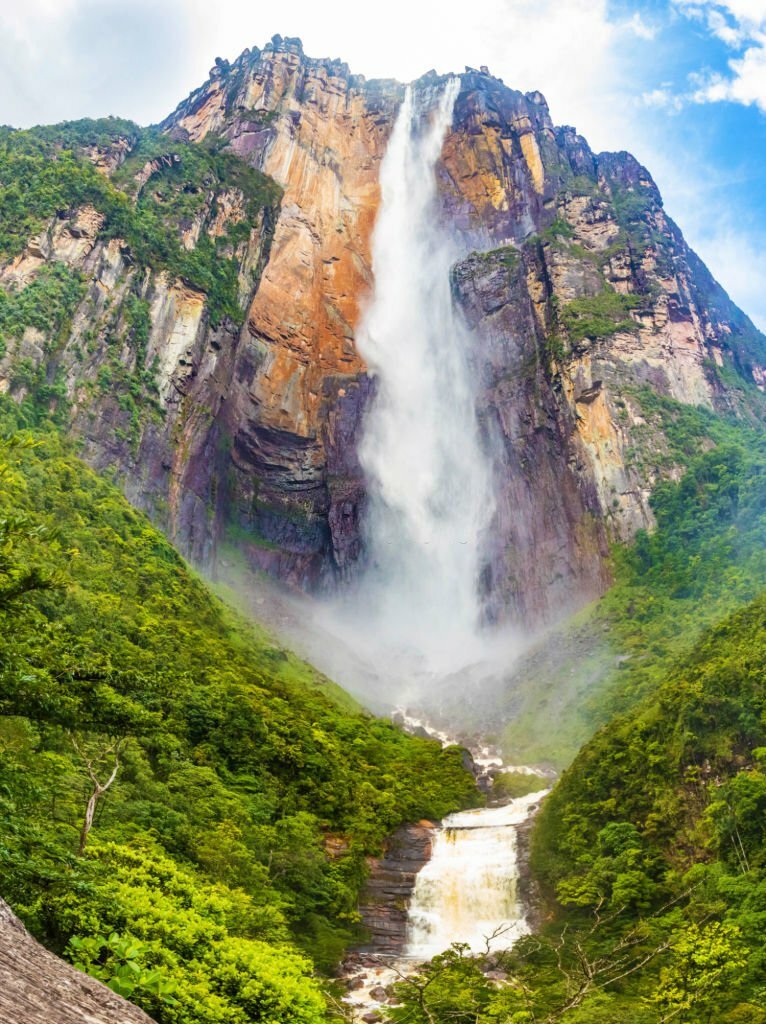
Tugela Falls, South Africa
Tugela Falls is the second highest waterfall in the world, with a height of 3,110 feet. Located in the Drakensberg Mountains of South Africa, this majestic waterfall is a popular destination for hikers and adventure seekers.
The Tugela Waterfall is one of the worlds most impressive waterfalls. It is a step waterfall consisting of five different steps, with a total length of 948 m, making it the worlds tallest waterfall.

Tyssestrengene Falls, Norway
With a height of 2,992 feet, Tyssestrengene Falls is the third highest waterfall in the world. This stunning waterfall is located in Husedalen Valley, a picturesque and remote area in Norway.
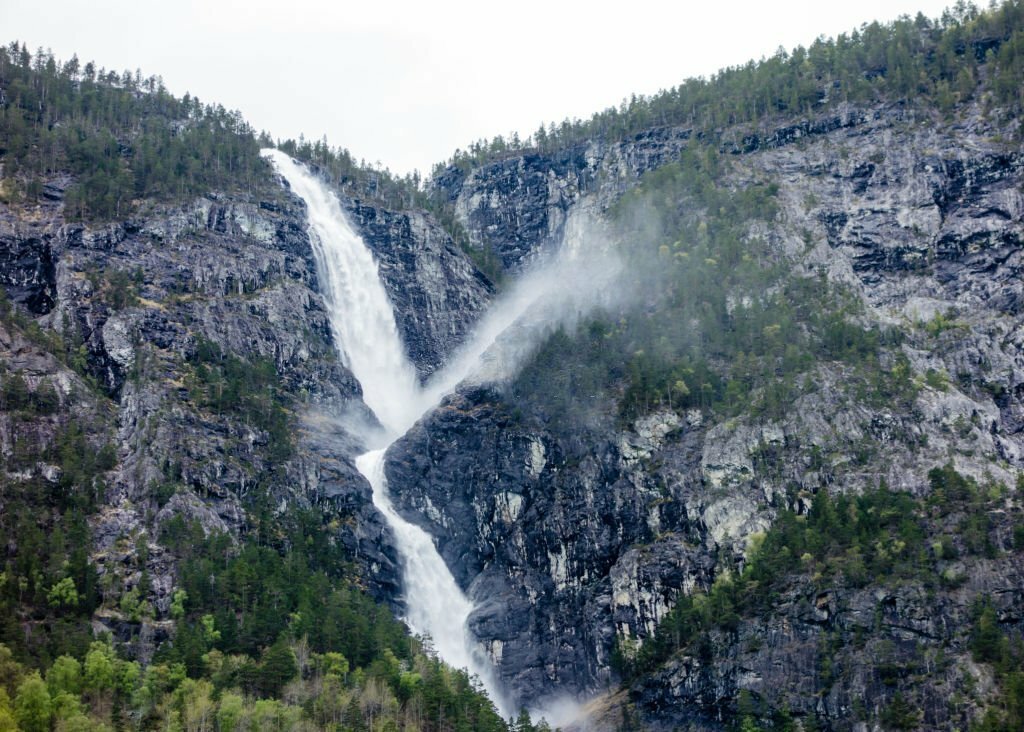
Olo'upena Falls, Hawaii
Olo’upena Falls is the fourth highest waterfall in the world, measuring in at 2,953 feet. Located on the island of Molokai in Hawaii, this remote and breathtaking waterfall is a hidden gem for those willing to make the trek to see it.
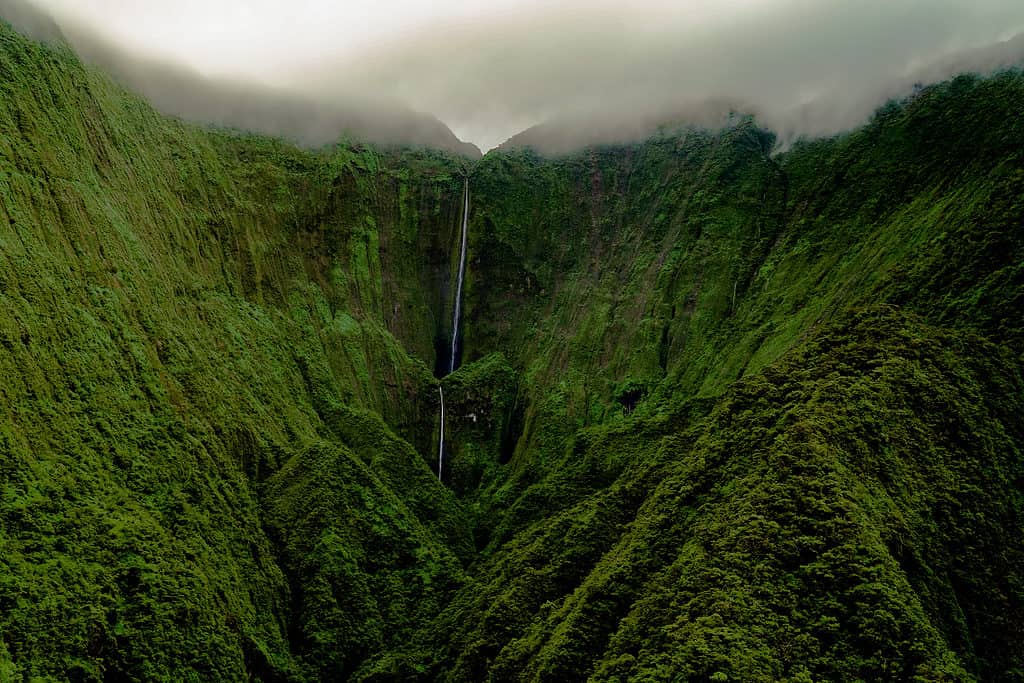
Yumbilla Falls, Peru
Yumbilla Falls is the fifth highest waterfall in the world, with a height of 2,938 feet. Located in the Amazonas region of Peru, this stunning waterfall is part of a series of cascades that are surrounded by lush rainforest and rich biodiversity.

Vinnufossen, Norway
Vinnufossen is the sixth highest waterfall in the world, with a height of 2,838 feet. Located in the Sunndal municipality of Norway, this majestic waterfall is a popular destination for hikers and nature lovers. Vinnufossen, a beautiful waterfall flushing down a mountainside in Sunndal, Norway. The tallest waterfall in Europe and the sixth tallest in the world. 865m (2,838 ft)
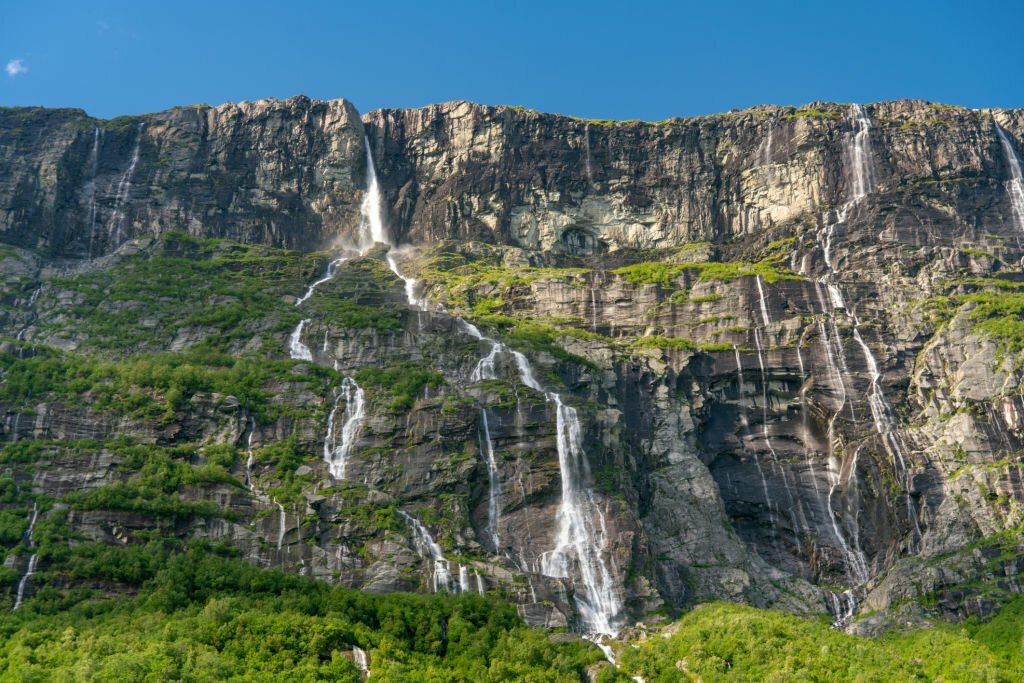
Balaifossen, Norway
With a height of 2,788 feet, Balaifossen is the seventh highest waterfall in the world. Located in the Hordaland region of Norway, this remote and stunning waterfall is a hidden gem for those seeking an off-the-beaten-path adventure.

Pu'uka'oku Falls, Hawaii
Pu’uka’oku Falls is the eighth highest waterfall in the world, measuring in at 2,756 feet. Located on the island of Molokai in Hawaii, this spectacular waterfall is one of the tallest sea cliffs in the world.
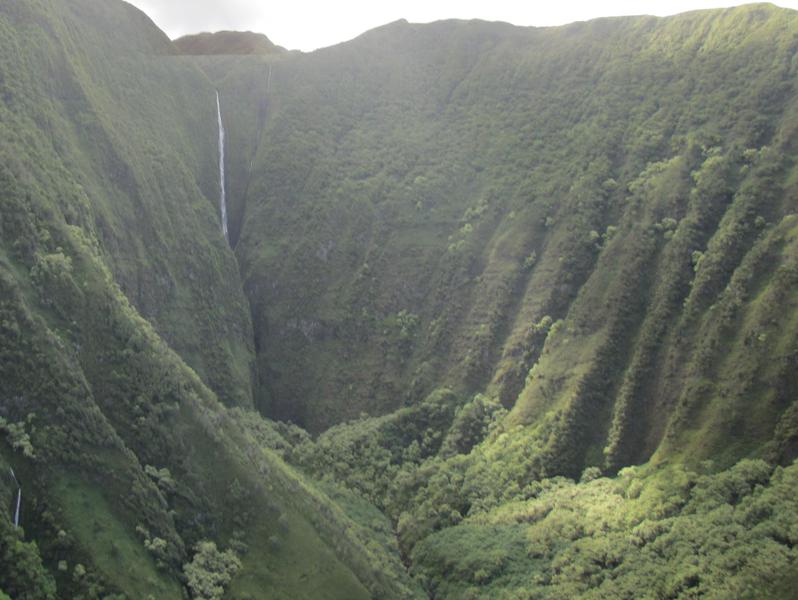
James Bruce Falls, Canada
James Bruce Falls is the ninth highest waterfall in the world, with a height of 2,755 feet. Located in the Princess Louisa Marine Provincial Park in British Columbia, Canada, this stunning waterfall is a popular destination for boaters and hikers.
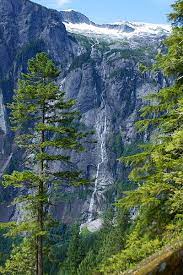
Browne Falls, New Zealand
Browne Falls is the tenth highest waterfall in the world, with a height of 2,744 feet. Located in the Fiordland National Park on the South Island of New Zealand, this impressive waterfall is part of a UNESCO World Heritage site and is a popular destination for outdoor enthusiasts.

These are just a few examples of the highest waterfalls in the world, each with its own unique beauty and charm. Whether you are a seasoned traveler or simply have a passion for natural wonders, visiting one of these breathtaking waterfalls is an experience that will stay with you forever. So, plan your next adventure and witness the sheer power and beauty of these amazing natural wonders.
India is a land of breathtaking natural beauty, and one of its most stunning natural features is its waterfalls. From the mighty Himalayas to the lush Western Ghats, India is home to numerous spectacular cascades that will take your breath away. Here are the top 10 waterfalls in India that are a must-visit for any nature lover.
Jog Falls, Karnataka
Located in the Shimoga district of Karnataka, Jog Falls is the second-highest plunge waterfall in India. The Sharavathi River takes a spectacular leap of 830 feet in four distinct segments, making it a mesmerizing sight to behold.

Dudhsagar Falls, Goa
Meaning “Sea of Milk” in Hindi, Dudhsagar Falls is a four-tiered waterfall located on the Mandovi River in the Western Ghats. Surrounded by lush greenery, the cascade creates a stunning visual spectacle that is well worth the visit.
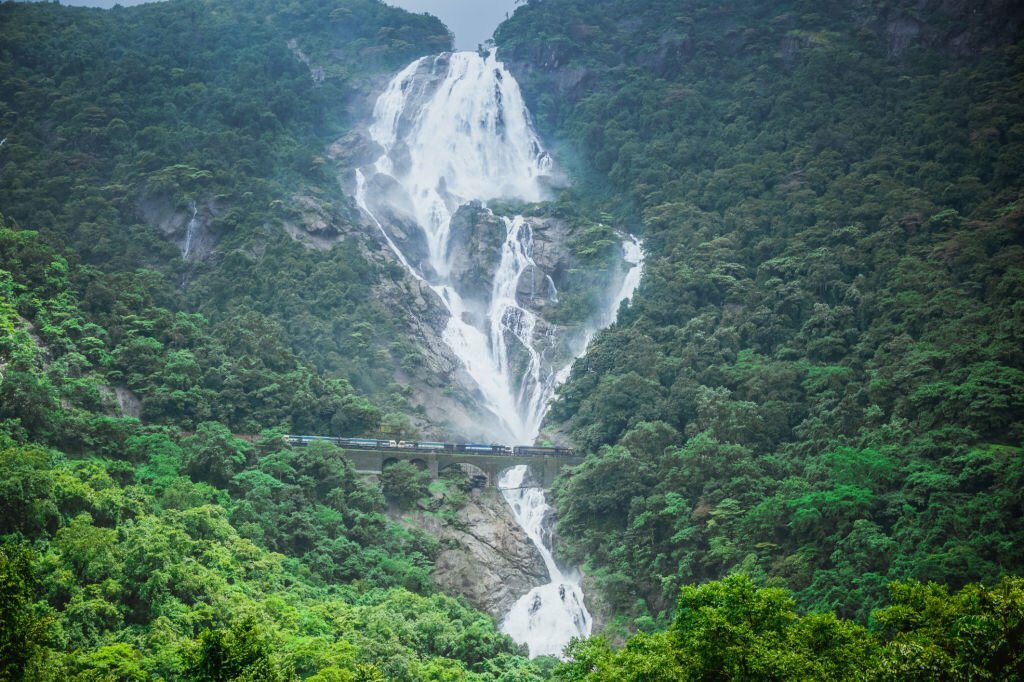
Athirappilly Falls, Kerala
Situated in the Thrissur district of Kerala, Athirappilly Falls is the largest waterfall in Kerala. With its thunderous roar and picturesque surroundings, it is often referred to as the “Niagara of India.” The waterfall is also a popular filming location for Indian movies.
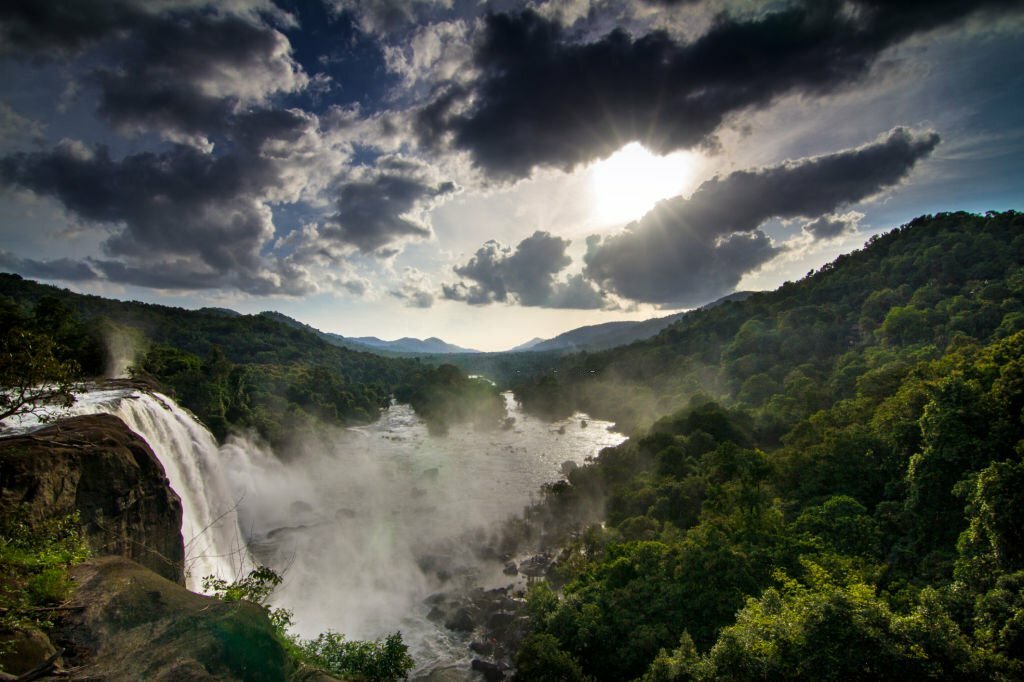
Nohkalikai Falls, Meghalaya
Nestled amidst the dense forests of Cherrapunji, Nohkalikai Falls is the tallest plunge waterfall in India. The striking blue-green plunge pool at the base of the waterfall adds to its stunning beauty, making it a must-see attraction in Meghalaya.
Nohkalikai Falls is the tallest plunge waterfall in India.Its height is 1115 feet.The waterfall is located near Cherrapunji, one of the wettest places on Earth. Below the falls there has formed a plunge pool with unusual green colored water.
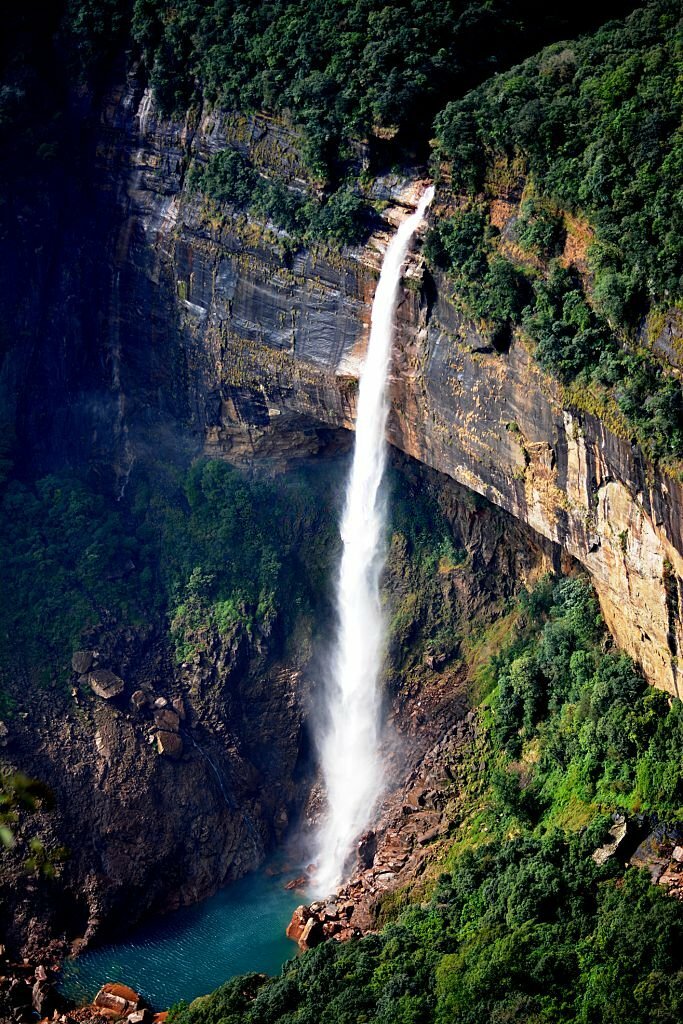
Nuranang Falls, Arunachal Pradesh
Also known as the Bong Bong Falls, Nuranang Falls is a hidden gem located in the Tawang district of Arunachal Pradesh. The cascade descends from a height of 100 meters, creating a picturesque setting against the backdrop of the snow-capped mountains.
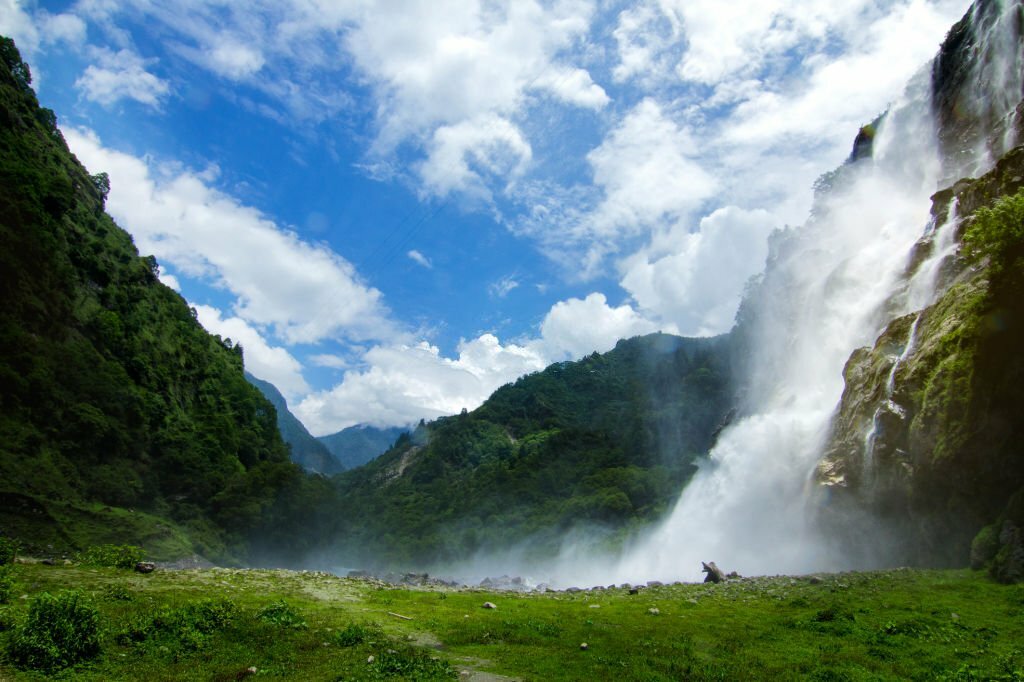
Nuranang Waterfalls also known as Jung Waterfalls, Tawang District, Arunachal Pradesh, India.
Kempty Falls, Uttarakhand
Located near Mussoorie, Kempty Falls is a popular tourist attraction known for its serene surroundings and crystal-clear waters. The waterfall cascades down in five distinct streams, creating a mesmerizing sight that is perfect for a refreshing dip.
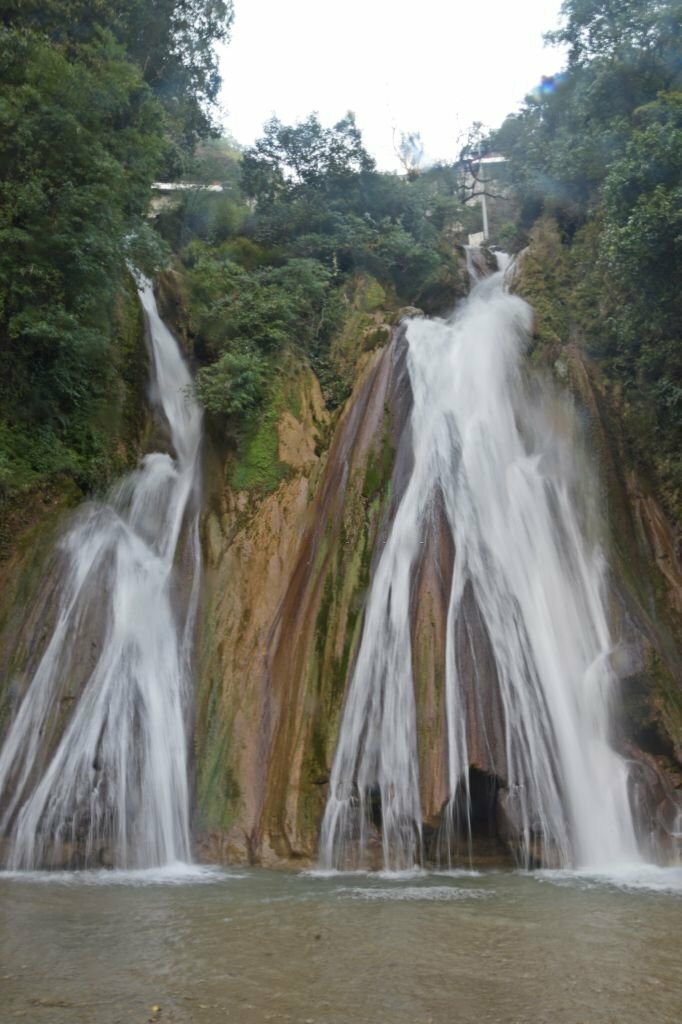
Bhimlat Falls, Rajasthan
Bhimlat Falls, also known as the “Bhimlat Kund,” is a picturesque waterfall located near Bundi in Rajasthan. The cascade is formed by the Chambal River as it plunges down into a natural gorge, surrounded by pristine natural beauty.

Soochipara Falls, Kerala
Soochipara Falls, also known as Sentinel Rock Waterfalls, is a three-tiered waterfall located in the Wayanad district of Kerala. The cascading waters, surrounded by dense forests and rocky cliffs, make it a popular destination for nature enthusiasts and adventure seekers.
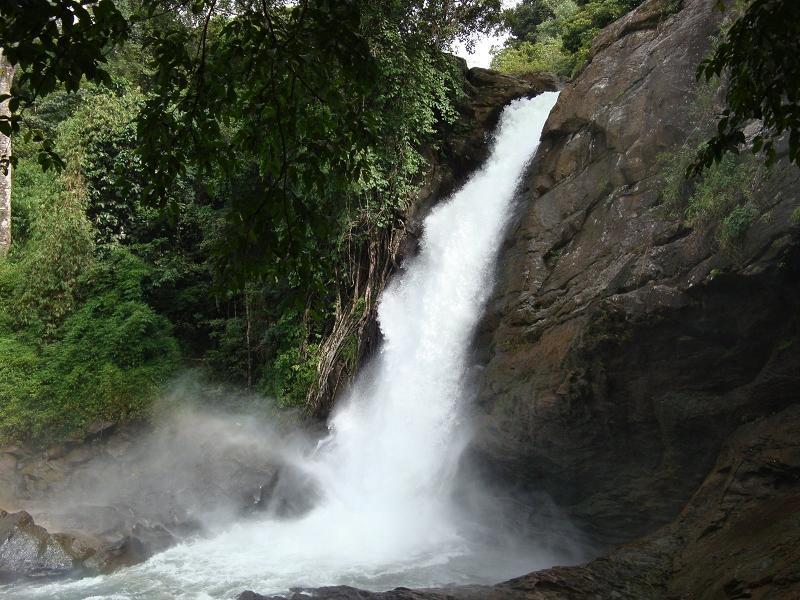
Kune Falls, Maharashtra
Situated in the Lonavala-Khandala valley, Kune Falls is the 14th highest waterfall in India. The cascade descends from a height of 200 meters, surrounded by lush greenery and serene landscapes that make it a popular spot for picnics and nature walks.
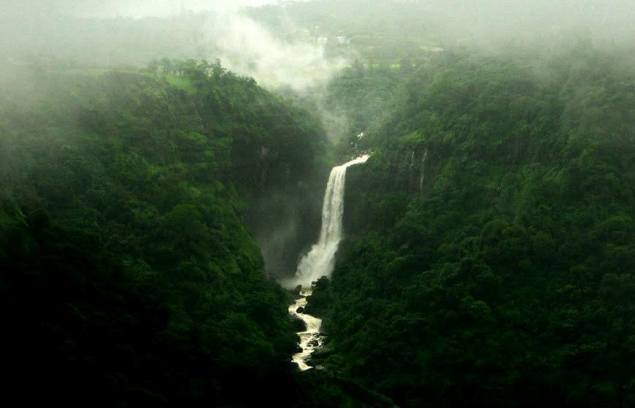
Hogenakkal Falls, Tamil Nadu
Located on the Kaveri River in the Dharmapuri district of Tamil Nadu, Hogenakkal Falls is often referred to as the “Niagara of India.” The roaring waters, surrounded by rocky cliffs and lush greenery, create a breathtaking spectacle that is a must-visit for any nature lover.
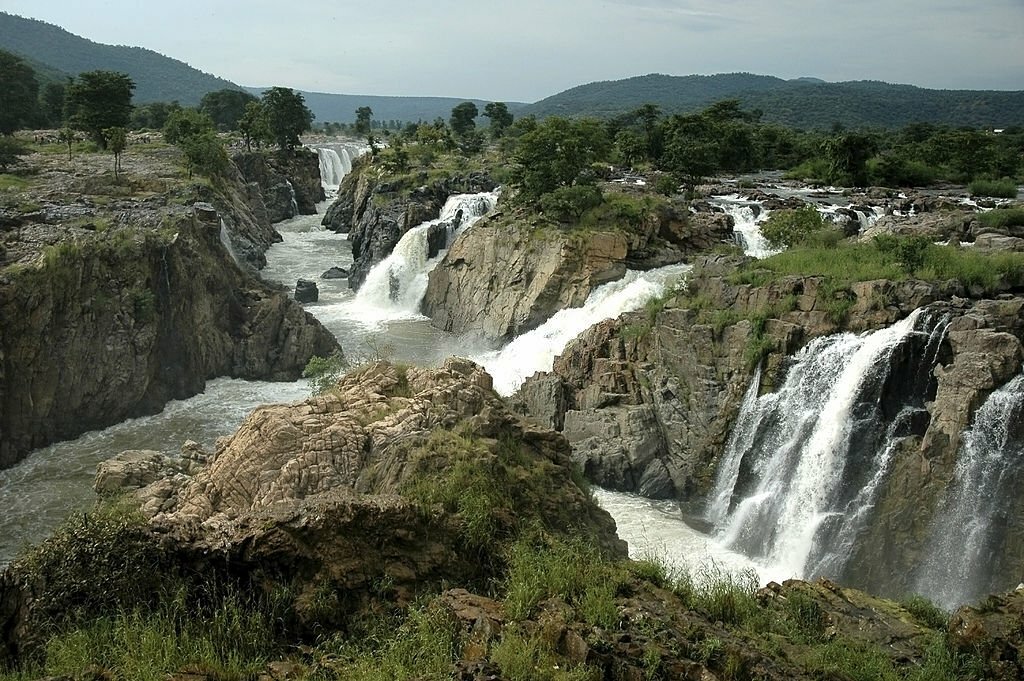
These top 10 waterfalls in India offer a glimpse of the diverse natural beauty that the country has to offer. Whether you are a nature enthusiast, an adventure seeker, or simply looking for a peaceful retreat, these waterfalls are sure to leave you spellbound with their unparalleled beauty and majestic presence. So, pack your bags and embark on a journey to witness the awe-inspiring waterfalls of India.
India is a land known for its diverse and stunning natural landscapes. From the towering Himalayas to the lush Western Ghats, the country is home to a range of stunning waterfalls, with some of the most impressive being Kunchikal Falls and Jog Falls.

Kunchikal Falls
Kunchikal Falls, located in the Shimoga district of Karnataka, is the highest waterfall in India, with a staggering height of 1,493 feet. The waterfall is a sight to behold, with water cascading down the rocky cliffs in a mesmerizing display of natural beauty. Kunchikal Falls is fed by the Varahi River and is surrounded by lush greenery, making it a popular spot for nature lovers and adventure enthusiasts.
The journey to Kunchikal Falls is an adventure in itself, with visitors having to trek through the dense forests of the Western Ghats to reach the waterfall. The trek offers breathtaking views of the surrounding landscape and is a memorable experience for all who undertake it. For those who prefer a more relaxed experience, there are also viewpoints from which to admire the imposing beauty of the falls.
In addition to Kunchikal Falls, Jog Falls in Karnataka is also a must-see for those who appreciate the power and beauty of nature. Jog Falls is the second highest plunge waterfall in India, with a height of 830 feet. The falls are created by the Sharavati River, which splits into four separate streams – Raja, Rani, Roarer, and Rocket – creating a magnificent spectacle as the water hurtles down the cliffs.
Like Kunchikal Falls, Jog Falls is also nestled within the lush greenery of the Western Ghats, providing visitors with a peaceful and picturesque setting in which to admire the natural wonder. The best time to visit Jog Falls is during the monsoon season, when the waterfall is at its most majestic and the surrounding landscape is alive with vibrant greenery.
Both Kunchikal Falls and Jog Falls are not only breathtaking natural wonders, but also important symbols of India’s rich and diverse natural heritage. They serve as reminders of the power and beauty of nature, and attract visitors from all over the country and beyond, who come to marvel at their awe-inspiring splendor.
Kunchikal Falls and Jog Falls are two of the most remarkable waterfalls in India, and are must-visit destinations for anyone who appreciates the majesty of nature. With their towering heights, breathtaking beauty, and stunning surroundings, these waterfalls are sure to leave a lasting impression on all who are fortunate enough to witness them.
Impact on the cultures and societies
The world’s tallest waterfalls have had a significant impact on local cultures and societies. They often play a central role in the mythologies and folklore of the communities that live near them. Many of these waterfalls are considered sacred or mystical places, and their presence has inspired a variety of stories and legends.
One example of this is Angel Falls in Venezuela, which is the tallest waterfall in the world. The Pemon indigenous people, who live in the area, believe that the waterfall is the home of the “spirit of the falls,” which they call Kerepakupai Merú. According to their mythology, Kerepakupai Merú is the daughter of the god of the sun and the moon, and she was turned into a waterfall to protect her from an evil spirit. The Pemon people hold Kerepakupai Merú in great reverence, and the waterfall is an important part of their cultural and spiritual traditions.
Similarly, the Iguazu Falls, located on the border of Brazil and Argentina, are steeped in myth and legend. The Guarani people, who have lived in the area for centuries, believe that the falls were created when a jealous deity caused the river to collapse in order to separate a pair of lovers. The falls are also said to be inhabited by powerful spirits, and the Guarani people perform rituals and ceremonies to honor and appease them.
In addition to their spiritual significance, waterfalls have also influenced the daily lives of the communities that live near them. They often provide a vital source of water for drinking, irrigation, and other agricultural practices. Many societies have developed customs and traditions related to the waterfalls, such as holding festivals and ceremonies to celebrate their power and beauty.
The world’s tallest waterfalls have had a profound impact on the cultures and societies that surround them, shaping their beliefs, traditions, and way of life. They are not just natural wonders, but also important symbols of the spiritual and cultural heritage of the people who live near them.
The unique geological features and formations that contribute to the formation of the top 10 highest waterfalls in the world include:
- Rock formations: The type and structure of the rock formations over which the waterfalls cascade can greatly influence their height and formation. For example, the presence of resistant rock layers can create steep drops and dramatic cascades.
- Fault lines and fractures: Fault lines and fractures in the Earth’s crust can create natural pathways for water to flow, allowing for the formation of high waterfalls.
- Erosion: The erosional forces of water over thousands of years can carve deep canyons and gorges, leading to the formation of tall waterfalls.
- Tectonic activity: Tectonic activity, such as the uplifting of land or the formation of volcanic processes, can create the elevation changes necessary for the formation of high waterfalls.
- Glacial activity: Glacial activity can carve out valleys and create steep drops, leading to the formation of impressive waterfalls.
- River systems: The complex network of river systems and their interactions with the surrounding landscape can contribute to the formation of high waterfalls.
- Climate and precipitation: The amount of rainfall and the climate of a region can also play a role in the formation of waterfalls, as higher rainfall can lead to more water flowing over the falls.
- Karst topography: In some regions, the dissolution of soluble rocks such as limestone can create underground drainage systems and sinkholes, which can contribute to the formation of waterfalls.
- Volcanic activity: Volcanic processes can lead to the creation of steep cliffs and canyons, providing the ideal conditions for the formation of high waterfalls.
- Geological uplift: The uplift of land due to geological processes can create the elevation changes necessary for the formation of tall waterfalls.
Waterfalls contribute significantly to the local ecosystem and surrounding environment in several ways:
Waterfalls provide a source of freshwater for plants, animals, and humans in the surrounding area. The flowing water from the waterfall replenishes the local water supply, helping to support the growth of vegetation and provide habitat for wildlife.
Additionally, the mist and moisture created by the cascading waterfalls create a unique microclimate that can support the growth of specialized plant species and provide a cool, moist environment for a variety of organisms.
Waterfalls are often important habitats for aquatic species, as the turbulent waters provide oxygenation and habitat diversity for fish, invertebrates, and other aquatic organisms.
The surrounding environment also benefits from the aesthetic and recreational value of waterfalls, attracting tourists and outdoor enthusiasts who contribute to the local economy and support conservation efforts.
Waterfalls are significant to the surrounding environment as they contribute to the health and biodiversity of the ecosystem, provide essential resources for local flora and fauna, and enhance the overall natural beauty and recreational opportunities in the area.
The top highest waterfalls in the world vary greatly in terms of accessibility and infrastructure for visitors. Some waterfalls are located in remote and difficult-to-reach areas, making them less accessible to visitors. These waterfalls may require hiking or even climbing to reach, and there may be limited or no infrastructure in place for safely viewing and experiencing them.
On the other hand, some of the top highest waterfalls, such as Venezuela’s Angel Falls or Yosemite Falls in the United States, are more accessible to visitors. These waterfalls may have well-maintained hiking trails, viewing platforms, or guided tours available, making it easier for visitors to safely experience these natural wonders.
The accessibility and infrastructure for safely viewing and experiencing the top 10 highest waterfalls vary widely, and visitors should research and plan accordingly before attempting to visit these natural attractions.
The different measurement techniques and factors such as volume of water, height, and overall size contribute to determining the ranking of the world's highest waterfalls in the following ways:
- Height: The height of a waterfall is a crucial factor in determining its ranking. This is typically measured from the top of the waterfall to the base, and often plays a significant role in a waterfall’s overall ranking. Taller waterfalls are generally considered more impressive and noteworthy.
- Volume of water: The volume of water flowing over a waterfall is also an important factor in determining its ranking. Waterfalls with a higher volume of water are often considered more powerful and awe-inspiring. Measuring the volume of water can be a bit more complicated, as it requires careful monitoring and calculation of the flow rate.
- Overall size: The overall size of a waterfall, including its width and depth, can also play a role in its ranking. This is especially true for waterfalls that are particularly wide or expansive, as these features can contribute to their overall impact and appeal.
By taking these factors into consideration and using the appropriate measurement techniques, experts can accurately determine the ranking of the world’s highest waterfalls. These measurements help to provide a comprehensive understanding of a waterfall’s scale and significance, ultimately informing its placement on a global ranking.
Frequently Asked Questions - Beauty of the Top Waterfalls
The highest waterfall in the world is Angel Falls, located in Venezuela. It has an uninterrupted drop of 979 meters (3,212 feet) and is a UNESCO World Heritage site.
The second highest waterfall in the world is Tugela Falls, located in the Drakensberg mountain range in South Africa. Tugela Falls has a total drop of 948 meters (3,110 feet) and is a popular hiking and photography destination.
South America is home to five of the top 10 highest waterfalls in the world. These include Angel Falls in Venezuela, Tres Hermanas Falls in Peru, Gocta Cataracts in Peru, Olo’upena Falls in Hawaii, and Yumbilla Falls in Peru.
Yes, the second highest waterfall in the world, Tugela Falls, is located in South Africa. It is a popular attraction for hikers and adventure seekers.
Yes, Peru is home to three of the top 10 highest waterfalls in the world, making it a popular destination for waterfall enthusiasts and nature lovers.
Yes, there are guided tours available for many of the top highest waterfalls in the world. These tours often include transportation, guided hikes, and knowledgeable local guides who can provide interesting facts and history about the waterfalls.
The highest waterfall in India is Kunchikal Falls, located in the Shimoga district of the state of Karnataka. It is also known as Kunchikal Abbe in the local language.
Kunchikal Falls is an impressive 455 meters (1,493 feet) in height, making it the highest waterfall in India and the 13th highest waterfall in the world.
The best time to visit Kunchikal Falls is during the monsoon season, which typically lasts from June to September. This is when the waterfall is at its most magnificent, with a roaring flow of water cascading down the rocky cliffs.
Kunchikal Falls is the highest waterfall in India, with a single uninterrupted drop, whereas Jog Falls, also located in Karnataka, is the second highest waterfall in India. Jog Falls is a segmented waterfall, meaning it is formed by multiple streams of water flowing over the rocky cliff.
Visitors should take caution when venturing near the waterfall, as the area can be slippery and the water flow can be unpredictable. It is advisable to stay on designated paths and to avoid swimming in the pool at the base of the waterfall. It is also recommended to check the weather conditions before visiting, as heavy rains can result in dangerous water currents.





















